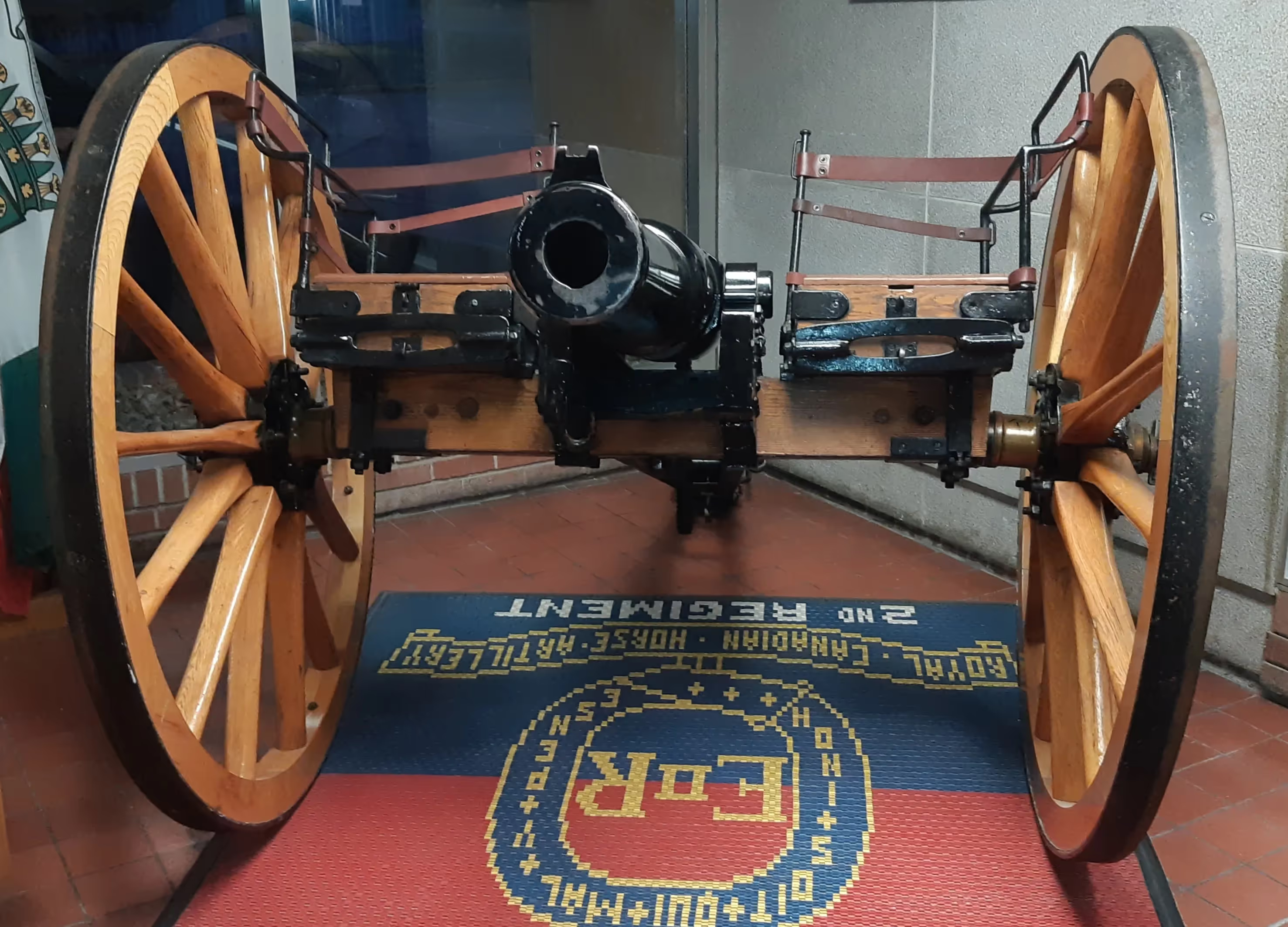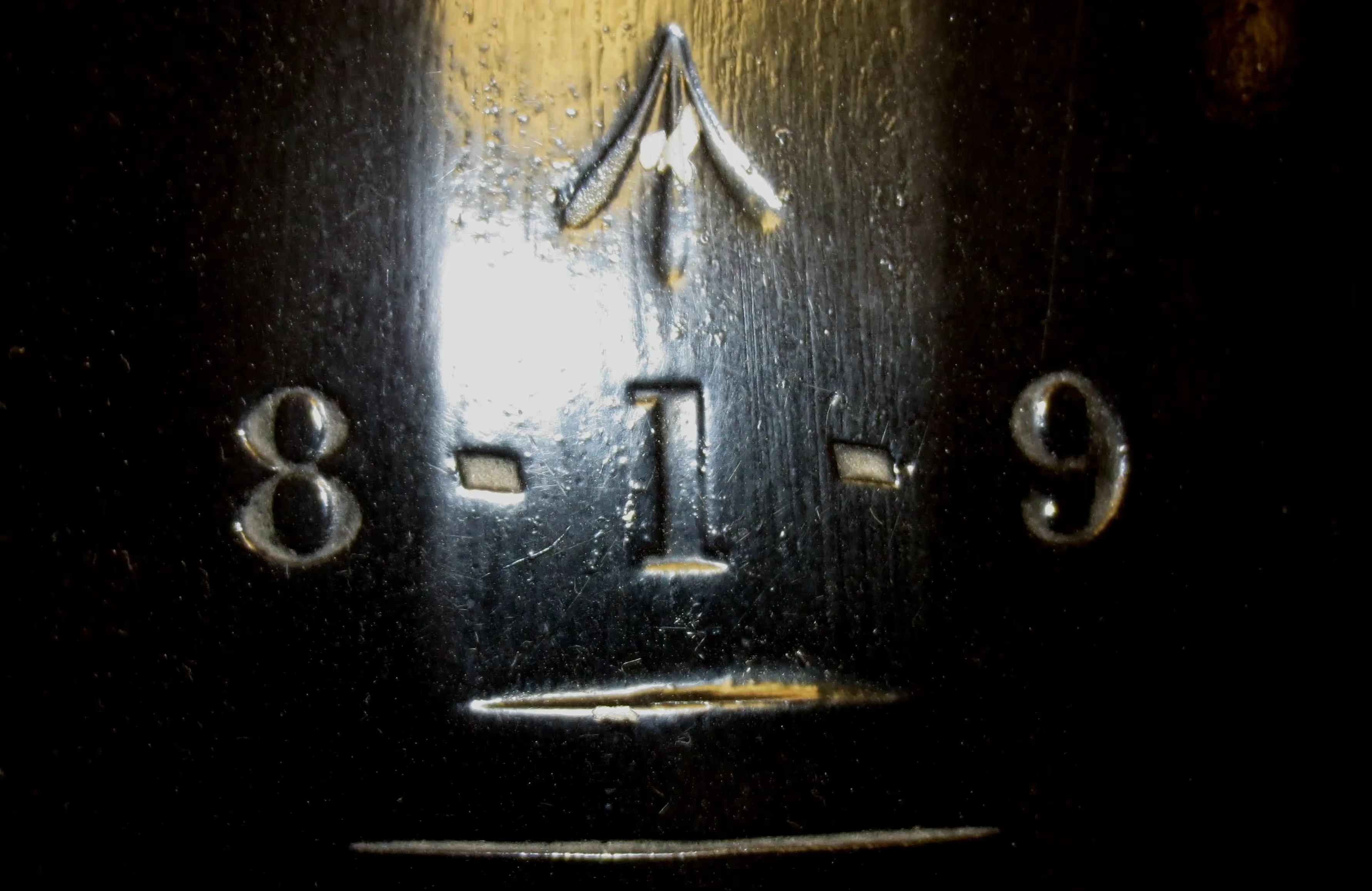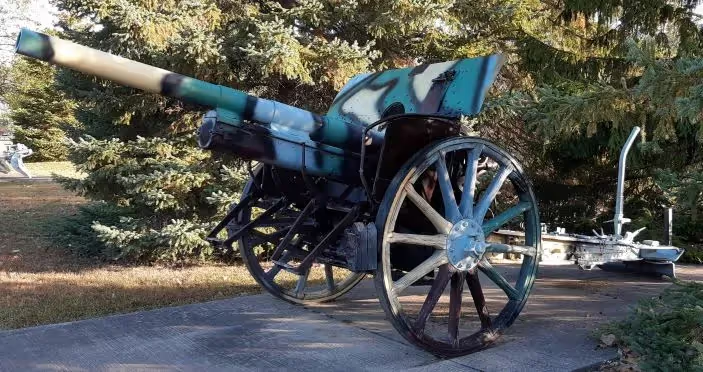Artillery in Canada (5) Ontario: 4 Canadian Division Support Base (4 CDSB) Petawawa
Artillery preserved in Ontario

(Library and Archives Canada Photo, MIKAN No. 3563835)
Ordnance QF 18-pounder Field Gun, being manned by gunners of the 4th Field Regiment, Royal Canadian Artillery (RCA), during a visit by the Earl of Athlone, Governor General of Canada, to Petawawa, Ontario in 1940.
4 Canadian Division Support Base Petawawa
The data found on this page has been compiled by the author. Photos are by the author unless otherwise credited. Any additions, correctons or amendments to this list of Artillery found at 4 CDSB Petawawa would be most welcome.
If you have information and photographs of military vehicles missing from this list that you are willing to share, updates would be most welcome and may be e-mailed to the author at [email protected].
The aim of this website is to locate, identify and document every historical piece of artillery preserved in Canada. Many contributors have assisted in the hunt for these guns to provide and update the data found on these web pages. Photos are by the author unless otherwise credited. Any errors found here are by the author, and any additions, corrections or amendments to the list of Guns and Artillery in Canada would be most welcome and may be e-mailed to the author at [email protected].
For all official data concerning the Royal Regiment of Canadian Artillery, please click on the link to their website:
Royal Regiment of Canadian Artillery Website
According to the 1974 edition of ACP 125 Cansupp 1A, "Sheldrake" was the appointment title for the artillery representative in a headquarters. "GOLF" was the arms indicator to be used by artillery callsigns on nets other than their own, especially those of the supported arms.

(Author Photo)

4th Canadian Division Support Base (4 CDSB) Petawawa was founded in 1905 as Camp Petawawa. The base provides support services to meet or exceed the requirements of the Units that exist on Garrison Petawawa. The Garrison is home to 2 Canadian Mechanized Brigade Group (2 CMBG), the Canadian Special Operations Regiment, 1st Canadian Field Hospital, 450 Tactical Helicopter Squadron , 427 Special Operations Aviation Squadron and a multitude of other Units.

Diagram 1 of 2, showing the locations of Military kit on display at 4 CDSB Petawawa.

Diagram 2 of 2, showing the locations of Military kit on display at 4 CDSB Petawawa.
2 RCHA



(Author Photos, 2 Sep 2011)








(Author Photos, 11 Oct 2019)
9-pounder 8-cwt Muzzleloading Rifle, weight 8-1-0 (924 pounds), RGF No. 22, I, 1870, mounted on a wheeled carriage, Foyer of RHQ, 2 RCHA.
Building J-108



(Allan Peterson Photos)
British 4.2-inch Smoothbore Mortar Mk. II with wheeled baseplate, located in the lobby of the main transient quarter on Base.
CFB Petawawa, RCD Lines, Bldg C40



(Author Photos, 2 Sep 2011)
12-pounder 6-cwt Breechloading Mk. IV Gun, weight 8-1-9 (933 lbs).
Four of these guns were recorded in Petawawa in 1933: Reg. No. 214, carriage Reg. No. 65231, RCD 00; Reg. No. 276, RCD 02; Reg. No. 287, carriage No. 67820, RCD 01; and Reg. No. 288, RCD 01.

(Library and Archives Canada Photo, MIKAN No. 4234796)
12-pounder 6-cwt Breechloading Mk. I Gun, RCHA.
CFB Petawawa Military Museum





(Author Photos, 11 Oct 2019)





(Author Photos, 2 Sep 2011)
12-pounder 6-cwt Breechloading Mk. IV Gun, weight 8-1-9 (933 lbs), Serial No. 269, IV, inside the Base Museum, RCD Carriage No. 07816.

(Author Photo, 2 Sep 2011)

(Author Photos, 11 Oct 2019)
25-pounder C Mk. 2 QF Field Gun, No. 1 of 2 at the front gate.



(Author Photo, 2 Sep 2011)

(Author Photo, 11 Oct 2019)
25-pounder C Mk. 2 QF Field Gun, No. 2 of 2 at the front gate.


(Author Photos, 11 Oct 2019)


(Author Photo)
25-pounder C Mk. 2 QF Field Gun with No. 9 circular firing platform, Artillery Park, No. 3 of 5 on base.

(Author Photo, 2 Sep 2011)


(Author Photos, 11 Oct 2019)
25-pounder C Mk. 2 QF Field Gun with No. 9 circular firing platform, 2 CMBG HQ. No. 4 of 5 on base.


(Author Photos, 2 Sep 2011)



(Author Photos, 11 Oct 2019)
25-pounder C Mk. 2 QF Field Gun with No. 9 circular firing platform, with Limber at Regimental HQ, 2 RCHA. No. 5 of 5 on base.

(Terry Honour Photo)
75-mm Pack Howitzer, rigged for a paradrop, inside the 2 CMBG main entrance.







(Author Photos, 11 Oct 2019)
5.5-inch BL Mk. III Gun on a Mk. I Carriage, Artillery Park. Canada made carriages for these guns during the Second World War, and after the war acquired 85 of them for the RCA. The gun fired a 45.5-kg (100-pound) shell to a range of 14,800 metres (16,200 yards).

(Author Photo, 2 Sep 2011)
105-mm L5 Pack Howitzer, rigged for a parachute drop, inside the Base Museum.


(Author Photos, 2 Sep 2011)

(Terry Honour Photo)




(Author Photos, 11 Oct 2019)
105-mm C1A1 M2A2 Howitzer, CDN 52, 1955, Menin Road near HQ 2nd Regiment, RCHA.



(Author Photos. 2 Sep 2011)


(Author Photos, 11 Oct 2019)
155-mm M109 Self-Propelled Howitzer, (Serial No. 77233), 1985, AC: CX, ECC: 119205 HUI C: 1764, SAUI C: 1764, VMO No. DLE21804, VMO Date: 24 Jul 2005. Display Monument. “26A”, the 1st Gun, 2nd troop, 2nd Battery, Menin Road.


(Author Photos, 2 Sep 2011)


(Author Photos., 11 Oct 2019)
105-mm L5 Pack Howitzer, Menin Road.




(Author Photos, 2 Sep 2011)


(Author Photos, 11 Oct 2019)
M31/M50 762-mm Honest John Rocket mounted on a transport trailer, Museum Park.




(Author Photos, 2 Sep 2011)



(Author Photos, 11 Oct 2019)
German First World War 7.7-cm Feldkanone 16 (7.7-cm FK 16), (Serial Nr. 24717), no data. Menin Road. This gun is not listed in the official records.




(Author Photos, 11 Oct 2019)
German Second World War 2.8-cm schwere Panzerbüchse 41 Anti-Tank Gun (2.8-cm sPzB 41) Anti-Tank Gun (Serial No. 2556). The barrel has a separate number, (Serial Nr. 52536) This gun is on loan from the RCA Museum CFB Shilo, Manitoba.


(Author Photos, 2 Sep 2011)





(Author Photos, 11 Oct 2019)
German Second World War 5-cm PaK 38 (L/60) AT Gun (Serial Nr. TBC), corroded, Menin Road.

(Library and Archives Canada Photo, MIKAN No. 3396316)
German Second World War 7.5-cm PaK 40 AT Gun, Hochwald, Germany, 13 March 1945.




(Author Photos, 2 Sep 2011)



(Author Photos, 11 Oct 2019)
German Second World War 7.5-cm PaK 40 AT Gun, (Serial Nr. R2595), 1942 beg, stamped BS:Fl1736fqv, Vr:FL200bej, Menin Road.





(Author Photos, 2 Sep 2011)



(Author Photos, 11 Oct 2019)
German Second World War 8.8-cm FlaK 37 AA Gun, (Serial Nr. R3864), stamped BS: Sg563492 RL1084bxe F1318beb, M:F1317beb, S:F1317beb on the breeching ring, North of the Main Gate.










(Author Photos, 11 Oct 2019)
German Second World War 15-cm schwere Feldhaubitze 18 Heavy Field Howitzer (15-cm sFH 18), (Serial Nr. R3079), shell strike on the remaining numbers on the breeching ring, Menin Road.



(Author Photos. 2 Sep 2011)


(Author Photos, 11 Oct 2019)
155-mm M109 SP Gun, 4 CDSB Petawawa.



(Author Photos, 2 Sep 2011)


(Author Photos, 11 Oct 2019)
Russian 57-mm ASU-57 SP Gun SP Gun, Museum Park.



(Author Photos, 11 Oct 2019)
107-mm BM-12 16-tube Multiple Rocket Launcher (MRL).

I would imagine that many of you who are reading this book are very likely familiar with the standard routine of military training exercises and the rigours of being in the field in all seasons, not to mention the conditions found on deployment these days. Whether or not you have experienced it, I am sure you can well imagine what it is like to train and work in the heat, the dust and the mosquitoes in summer, the wind, the rain and the mud in the spring and fall, the snow and the cold in the winter and of course the routine day-to-day challenges of combat exercises in the training areas of the Canadian Forces. For most in the Army, this includes CFB Gagetown, CFB Valcartier, CFB Petawawa, CFB Kingston, CFB Shilo, CFB Edmonton, CFB Wainwright, CFB Suffield and all the fields and exercise areas of LFAATC Aldershot and LFCATC Meaford and their environs.
As an Army Officer in the Canadian Forces, it has been my privilege to have served alongside a tremendous number of highly professional military men and women of our nation while taking part in training in Germany, the UK and the USA and while on operational deployments to Cyprus, Bosnia-Herzegovina and in Afghanistan. During my training and military professional development, I have learned much about our long military history. My interest in our multi-faceted historical record has led me to write about it and to seek out the stories about Canada's military servicemen and women and the tools and equipment they used to preserve our security when warclouds darkened our horizons.
As a military history enthusiast, I have learned over the years that there are many with similar interests in preserving our story. We have all seen the odd old gun or retired tank placed on display outside a Militia Drill Hall, War Memorial, city park site or Royal Canadian Legion Hall, and many will have enjoyed visiting a number of our military Museums. The vast majority of retired wartime combat equipment used by members of the CF have dwindled in number, many being scrapped, others being shot up as targets, while a few have been sold to overseas operators and collectors. Fortunately, a handful of important examples of retired CF guns and war machines have been preserved and may be found in a wide variety of locations throughout Canada.
Curators, docents and volunteers working in Canada's military museums have been successful in preserving a good number of retired military weapons of war and many are still being sought after and in some cases, being restored to running condition again. As an artist, photographer and military history enthusiast, I have attempted to keep track of where historic Canadian military equipment has survived and is presently located and to make that information available to others with the same interest. For those of like mind, the purpose of this handbook is to provide a simple checklist of the classic Great War and WWII artillery that is part of our military heritage and a location guide to where they can be found in Canada. The book includes a number of photographs to illustrate an example of each gun wherever possible, and lists the locations of the survivors by province.
The numbers of restored Canadian guns is actually increasing as a few rare examples are being recovered from scrapyards and monument sites and salvaged for restoration. (Ultra rare items such as Skink AA gun turrets come to mind). One of the aims of this book is to help an enthusiast track down these monuments and museum artefacts and to have a simple reference book on hand with more detailed information about them such as a serial number, a Museum location and contact information which might be helpful in learning a bit of the history of a particular vehicle. The guns detailed in this handbook are listed alphabetically by manufacturer, number and type in the order that they came into service with the CF. The data is also appended with a list of most of the current guns found in the various collections and Museums in Canada. The book is also meant to serve as a companion volume to "Ironsides", Canadian Tanks and Armoured Fighting Vehicle Museums and Monuments, also available online.
It is my sincere hope that more of the guns and artillery found in this list will one day be added to the record of historically important military armament survivors that have been recovered and restored.
Shelldrake can be ordered online in softcover or e-book at these bookstores:
http://bookstore.iuniverse.com/Products/SKU-000542288/Shelldrake.aspx
Photos and technical data on artillery preserved in Canada may be viewed by Province on separate pages on this website.

(Library and Archives Canada Photo, MIKAN No. 3197144)
Members of a demolition squad fill an eight-foot deep hole planted with 90 pounds of RDX explosives before a field test at Camp Petawawa, March 1944.

(Library and Archives Canada Photo, MIKAN No. 3197147)
Demolitions experts measure the diameter of a 25-foot crater created by blasting 90 pounds of RDX explosives during an explosives test at Camp Petawawa, March 1944.





